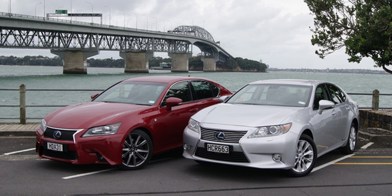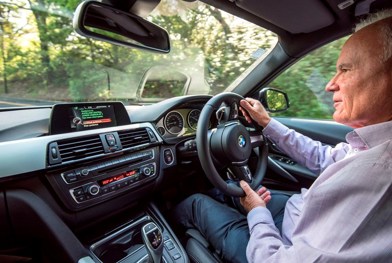NEW SIXTH GENERATION ELANTRA LOADED WITH TECH, WRITES ROBERT BARRY
The small passenger car market may be in overall decline as new car buyers move to small crossovers and SUVs, but small sedan numbers have remained steady for the past six years, according to Hyundai New Zealand Limited.
It is confident of selling 300 of the new Elantra sedans to New Zealand buyers this year.
Hyundai will primarily target the fleet market with the two new 2-litre petrol models, the tech-laden Elantra and Elantra Elite, but it says the car is also popular with empty-nesters looking to downsize from larger family sedans and wagons.
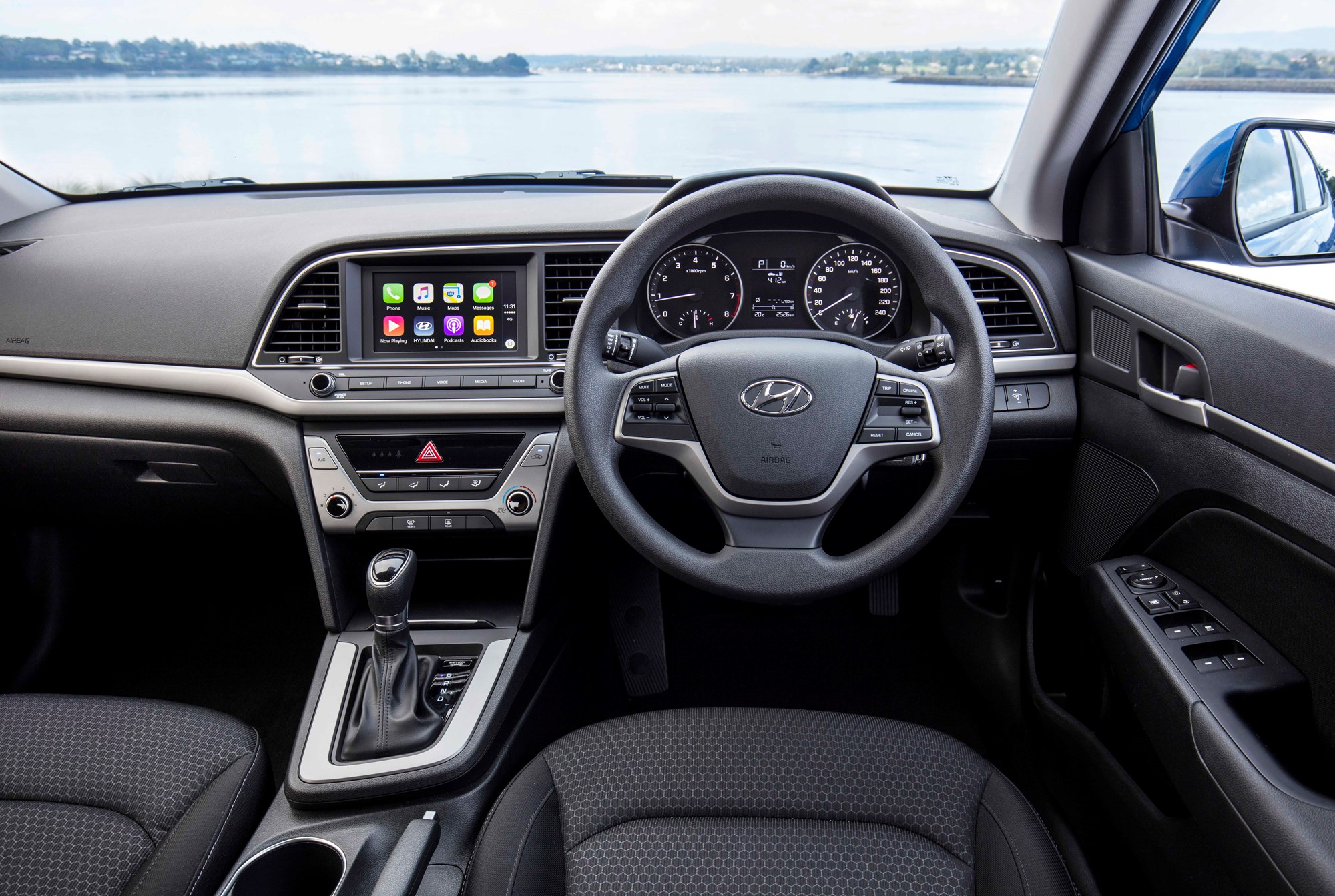 Mindful of the competitive space the new sixth-generation Elantra plays in, Hyundai New Zealand has retained the previous generation cars’ recommended retail pricing of $35,990 and $39,990 while adding more technology such as Apple Carplay, blind spot detection, rear cross traffic alert, smart boot, as well as front and rear park assist.
Mindful of the competitive space the new sixth-generation Elantra plays in, Hyundai New Zealand has retained the previous generation cars’ recommended retail pricing of $35,990 and $39,990 while adding more technology such as Apple Carplay, blind spot detection, rear cross traffic alert, smart boot, as well as front and rear park assist.
The Elite model is particularly well-specified for the class with proximity key, rain sensing wipers, smart welcome system, heated front seats, leather upholstery, premium sound system, electric folding mirrors, dual zone climate control air conditioning and push button start.
Globally the Elantra sedan is Hyundai’s biggest selling vehicle with more than 10 million units sold worldwide, and the C-segment vehicle won the prestigious 2012 North American Car of the Year.
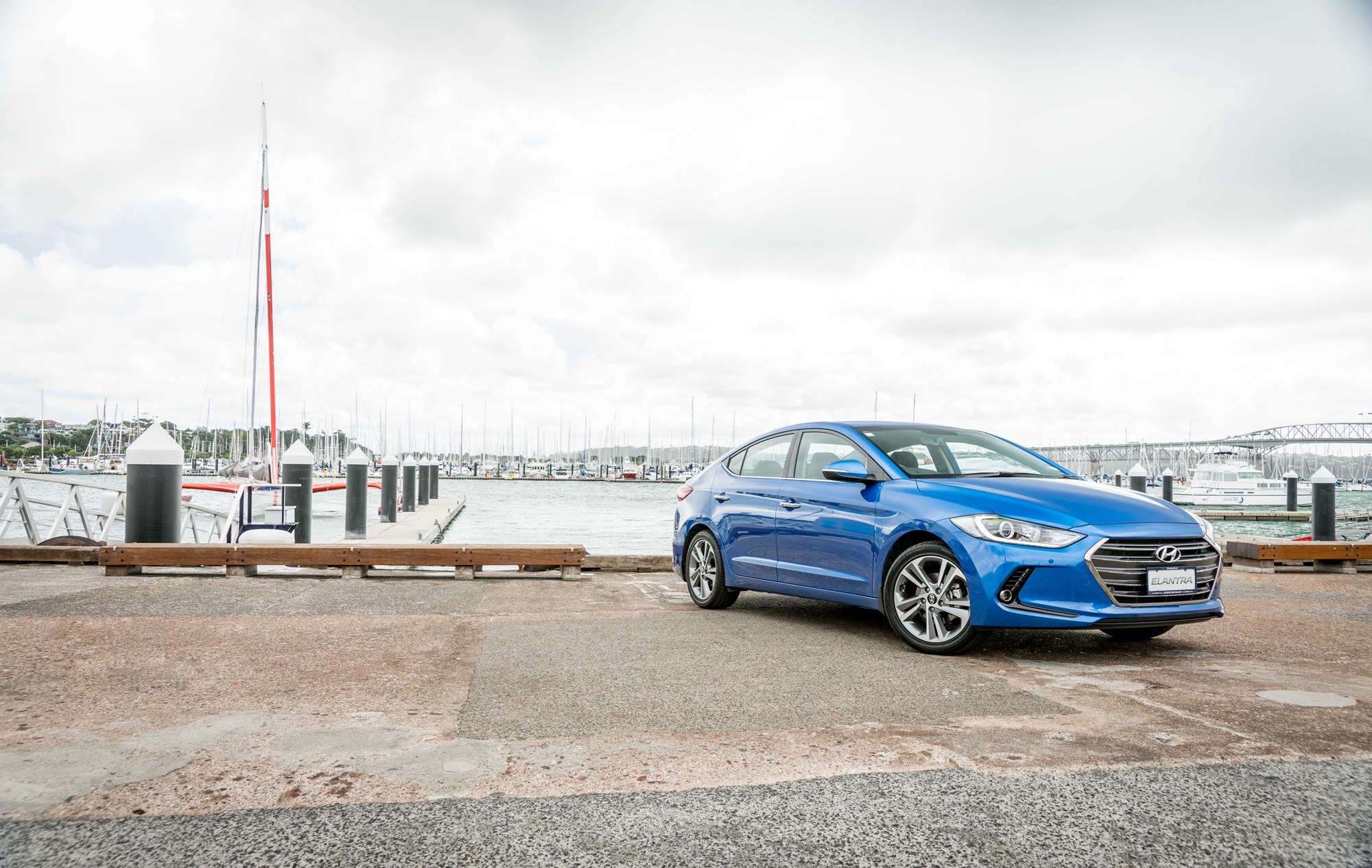 Hyundai national marketing manager Cory Gordon admits it is possible the new 2-litre Elantra might eat in to the sales of the slightly bigger Hyundai i40 sedan, but he says sales of that car are quite small and there’s a group of consistent buyers for it.
Hyundai national marketing manager Cory Gordon admits it is possible the new 2-litre Elantra might eat in to the sales of the slightly bigger Hyundai i40 sedan, but he says sales of that car are quite small and there’s a group of consistent buyers for it.
“We are confident there is a place for Elantra in the New Zealand market and we will get the sales we have forecast,” says Gordon.
A third Elantra variant, the Turbo with a 150kW Turbo 1.6-litre turbocharged petrol engine and a sporty demeanour with larger brakes, sports exhaust, body kit and different interior trim will arrive in New Zealand in the third quarter.
The Turbo will offer the option of a six-speed manual or a seven-speed DCT transmission.
“There is always a demand for a manual gearshift hence we make the option available but by far the automatic is the greater preference,” says Hyundai New Zealand technical manager Gavin Young.
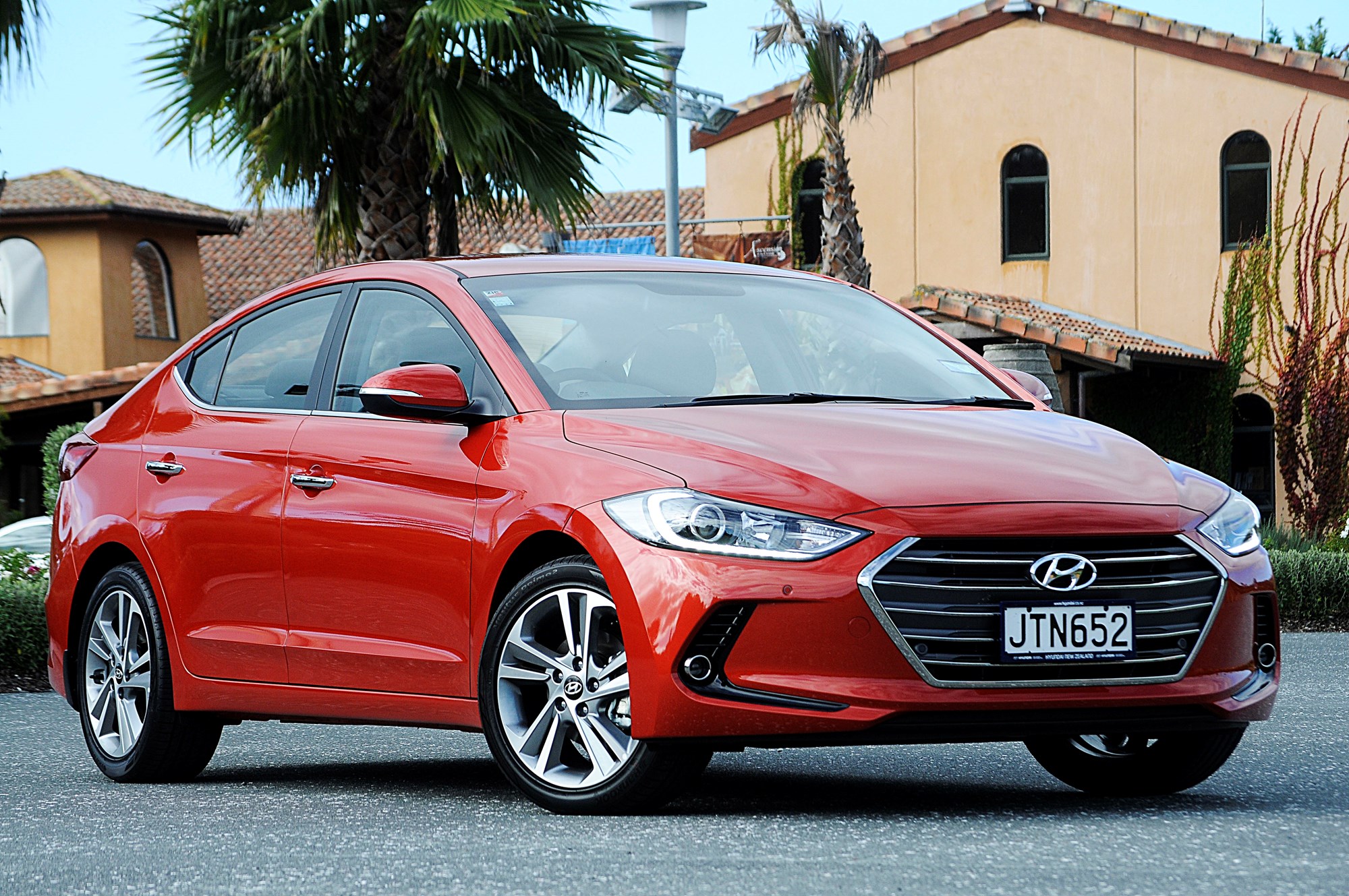 The new car’s exterior styling draws the Elantra into the new Hyundai Fluidic Sculpture 2.0 design language but acknowledges the outgoing car.
The new car’s exterior styling draws the Elantra into the new Hyundai Fluidic Sculpture 2.0 design language but acknowledges the outgoing car.
It has more presence on the road than its predecessor and looks worryingly close in dimension to its big brother the i40.
Featuring a new version of the Hyundai hexagonal chrome grille, and presenting a low and wide nose profile, the latest Elantra sedan has integrated LED ‘fog’ lights, and LED daylight running lights that emphasise the new sculpted wrap-around headlight/indicator clusters (Elite versions) and other subtle features including LED indicators in the housings of the auto-folding side mirrors.
Ducts in the front bumper direct air into the front wheel wells to smooth out airflow down each side of the car.
Hyundai introduced Apple’s Car Play phone/device integration technology in New Zealand with the Tucson in late 2015.
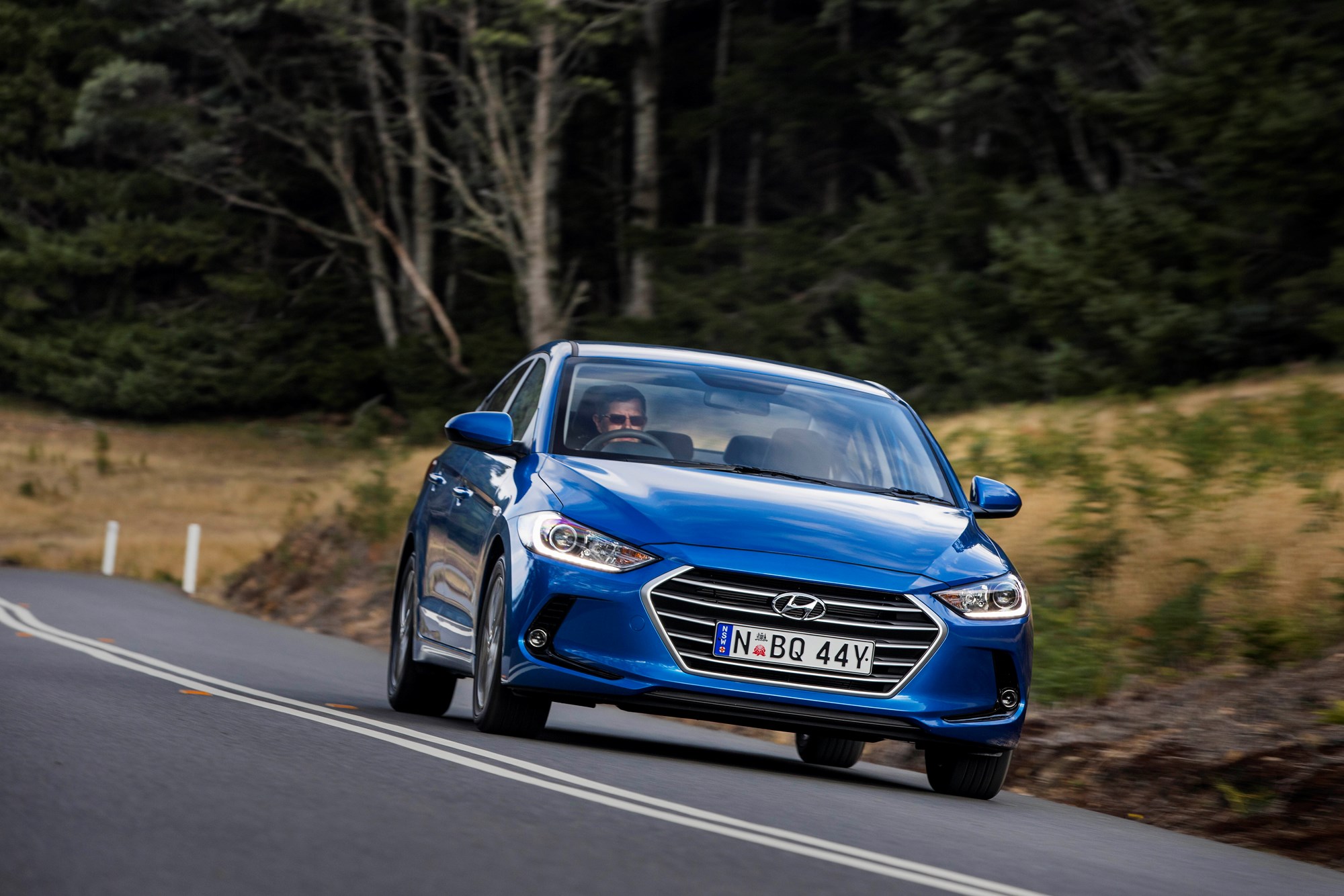 The new Elantra models also feature the Apple system which will be welcomed by millennials as it allows drivers to hear and send SMS messages without taking their hands off the steering wheel.
The new Elantra models also feature the Apple system which will be welcomed by millennials as it allows drivers to hear and send SMS messages without taking their hands off the steering wheel.
For non-Apple users the similar Android Auto technology will be available later in 2016.
The technology allows selection of the owner’s favourite phone-based ‘apps’, music playlists and their preferred GPS navigation system and Siri, Apple’s own voice-command/information system.
We made good use of the Apple system on the media launch drive from Mt Wellington to Matakana via Helensville and Warkworth.
Plugging an iPhone 5S into the USB port on the Elantra’s dashboard, allowed us to directly use the phones mapping app in realtime, enter our destination, and dispense with the sheet of driving instructions.
Navigators who are prone to car sickness will also benefit from this technology. The sixth-generation Elantra features steering and suspension tuning that was carried out by Hyundai engineering staff in Australia, honing the settings for springs and dampers over the worst that the Outback roads and highways could throw at the new model.
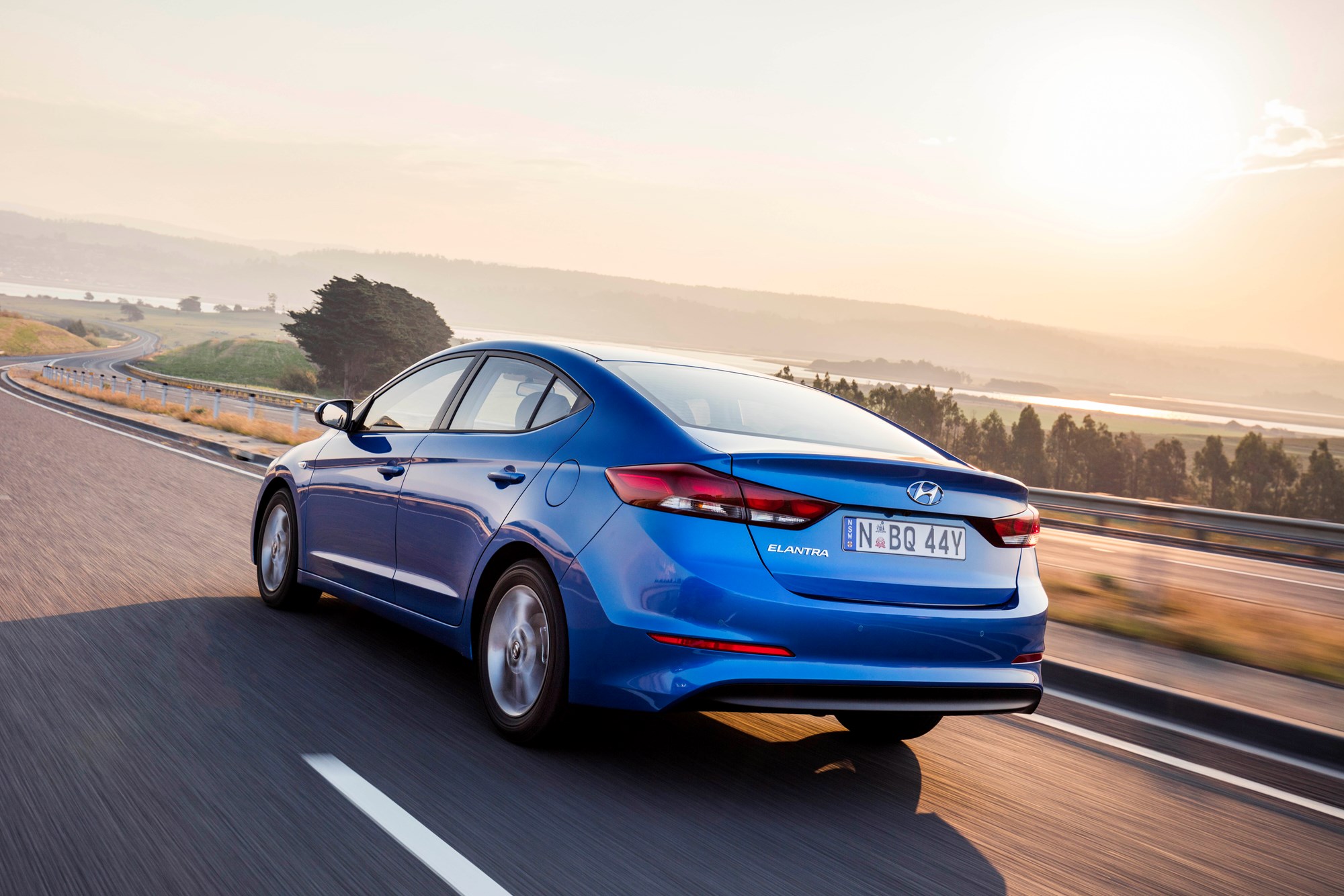 Hyundai’s engineering team tried more than 40 different suspension set-ups in Australia before it was satisfied with the outcome for the production car.
Hyundai’s engineering team tried more than 40 different suspension set-ups in Australia before it was satisfied with the outcome for the production car.
It’s a fairly conventional McPherson strut front suspension with coil springs, gas-filled shock absorbers and an anti roll bar, coupled with a rear torsion beam system, also with coil springs and gas-filled shock absorbers.
On our roads the results show up in a car that has a nice feel to the electric power steering system, with good feedback and response.
Being a front-wheel-drive car, the Elantra works best on the slow in and fast out cornering approach, but the car doesn’t pitch or wallow through lumpy corners, and the ride quality is comfortable and quiet, even over chip seal roads.
On the motorway it’s extremely quiet, no doubt helped by the low drag coefficient of 0.27 which used to be the preserve of far more prestigious and expensive saloons.
The new NU-series four-cylinder 2-litre multipoint engine offers 112 kW of power at 6200 rpm and 192 Newton metres of torque at 4000 rpm, which is ably handled by the six-speed automatic transmission.
There’s more than enough power and torque to get the Elantra briskly past logging trucks as we found during our run up State Highway 16, and yet the quoted average fuel consumption of 7.2L/100km is easily attainable.
For a small sedan that is squarely aimed at road warriors such as sales reps, and also retirees, the new sixth generation Elantra, particularly the well-equipped Elite variant, more than ticks all the boxes that a fleet or private buyer could ever want.












